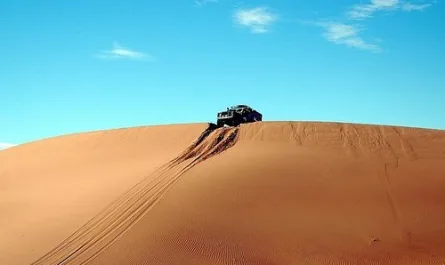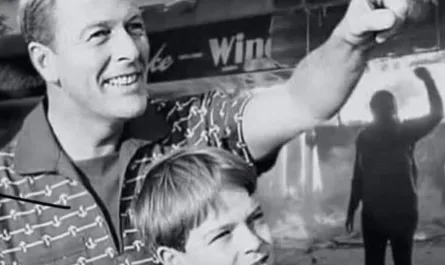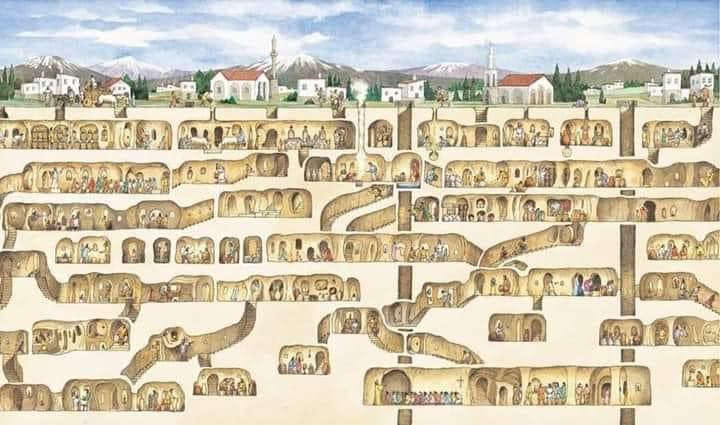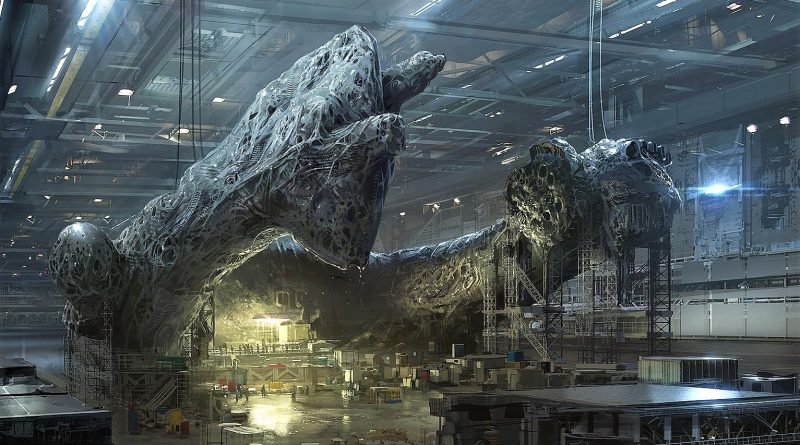cliff dwelling, housing of the prehistoric Ancestral Puebloans (Anasazi) people of the southwestern United States, built along the sides of or under the overhangs of cliffs, primarily in the Four Corners area, where the present states of Arizona, New Mexico, Colorado, and Utah meet. These masonry dwellings are associated with the Ancestral Pueblo culture period known as Pueblo III (approximately 1150–1300 ce).

The first Ancestral Puebloans were nomadic foragers whose economy relied upon hunting and gathering wild foods. When they became sedentary and began to cultivate corn (maize), they also began to build circular pits as storage bins. Later they reinforced the bins with stone walls and covered them with roofs, and some individuals began to use the structures as homes. Once they had developed farming techniques adequate to the arid climate and were able to live completely on the corn, squash, beans, and cotton they grew, the Ancestral Puebloans established permanent communities and began to build their houses aboveground.
Cliff dwellings are the culmination of these architectural developments; the use of hand-hewn stone building blocks (the principal construction material) and adobe mortar was unsurpassed even in later buildings. Ceilings were built by laying two or more large crossbeams and placing on them a solid line of laths made of smaller branches. The layers were then plastered over with the same adobe mixture frequently used as mortar. Edifices several stories high were built with each succeeding story set back from the one below, creating a row of terraces on each level and giving the structure a stepped appearance.
Residential rooms measured about 10 by 20 feet (3 by 6 metres). Entrance to ground-floor rooms was by ladder; people used the ladder to climb to the roof of the room and then descended into the room through an opening cut into its ceiling; rooms on upper floors could be entered by doorways from adjoining rooms and by additional roof/ceiling entrances. Each community had two or more kivas, or ceremonial rooms, usually round in early times but later square.
Although earlier Ancestral Puebloan villages were built in the open, these people began to build cliff dwellings about 1150, perhaps as a defense against invading groups of ancestral Navajo and Apache. In addition to the natural protection provided by a cliff, the absence of doors and windows to the rooms on the ground floor left a solid outer stone wall that could be surmounted only by climbing a ladder; ladders could easily be removed if the town were attacked. Many smaller communities joined together to form the large towns built beneath the cliffs. Two of the largest, the Cliff Palace at Mesa Verde National Park in Colorado and the five-story Pueblo Bonito in New Mexico, probably had about 150 and 800 residential rooms, respectively.
As the 13th century ended, the Ancestral Puebloans abandoned the cliff dwellings for other sites. An examination of tree trunks from that period using dendrochronology indicates that a severe drought occurred in the region between 1276 and 1299. Often referred to as the Great Drought, this climatic event probably occasioned crop failures and shortages of drinking water, creating difficulties in provisioning the concentrated population living in the cliff dwellings.
Mesa Verde National Park
Mesa Verde National Park, national park in southwestern Colorado, U.S., established in 1906 to preserve notable prehistoric cliff dwellings; it was designated a World Heritage site in 1978. Occupying a high tableland area of 81 square miles (210 square km), it contains hundreds of pueblo (Indian village) ruins up to 13 centuries old. The most striking are multistoried apartments built under overhanging cliffs. Besides the ruins, the park has some spectacular and rugged scenery.
The park occupies part of a large sandstone plateau rising more than 8,500 feet (2,600 metres) above sea level that slopes gently to the south. Stream erosion during the past two million years cut deep canyons into the plateau, leaving narrow strips of high tableland, or mesa, between the canyons. Water erosion formed niches and alcoves of various sizes in the sandstone of these canyon walls (where the cliff dwellings are located). On the top of these mesas there are windblown deposits of fertile reddish soil (loess). The climate is semiarid and, according to the examination of tree rings, has changed little during the past 600 years. The area’s plant life is adapted to the semiarid climate: piñon-juniper forest is the dominant vegetation on the mesas, and sagebrush is the characteristic vegetation on the canyon floors. Elk are the most common large animals, and there are a few bears and mountain lions and many smaller mammals in the park. Snakes and lizards also abound, as do birds.
About 550 ce, Basketmaker peoples, direct ancestors of the region’s later Ancestral Pueblo (Anasazi) peoples, moved into the Mesa Verde area. They made pottery and built clusters of semi-subterranean pit houses on the mesa tops at an elevation of 7,000 feet (2,000 metres), where they also cultivated corn (maize), beans, and squash. There was usually sufficient rainfall for their crops, and springs and seeps provided drinking water. About 750 ce, surface dwellings began to be constructed, consisting of houses with vertical walls and flat roofs, all joined together in long rows; archaeologists designate this as the Pueblo I period. Sandstone began to be more commonly used in house construction, and one or more subterranean pit rooms (kivas), probably used for ceremonial purposes, were dug in front of these row houses. Houses with more than one story and round towers also began to be built.
Between 1150 and 1200 the Ancestral Pueblo peoples shifted their dwelling sites from the mesa tops into the alcoves in the canyon walls, where they began to build the cliff houses, with rooms averaging 6 by 8 feet (1.8 by 2.4 metres) in size, using sandstone and the construction methods developed earlier. Crops continued to be cultivated on the mesa tops; dry-farming techniques were used. The alcoves under the canyon rims that face south-southwest were preferred for cliff dwellings, probably because of the warming effect of winter sunshine. The largest cliff dwelling in the park is Cliff Palace, which housed as many as 250 people in its 217 rooms and 23 kivas. Long House, the second largest cliff dwelling, has 150 rooms and 21 kivas, where some 150 people lived. However, of the approximately 600 cliff dwellings in the park, most have only one to five rooms each. The population of Mesa Verde probably peaked at about 5,000 persons.
By 1300, following the Great Drought (1276–99), most of the people had left Mesa Verde, moving south, according to archaeological evidence, into what is now New Mexico and Arizona. These people are among the ancestors of the present-day Pueblo Indians.
Several of the cliff dwellings, including Cliff Palace, are open to visitors; camping is available, and a lodge is open in the park in the summer.
Pueblo architecture
Pueblo architecture, traditional architecture of the Pueblo Indians of the southwestern United States. The multistoried, permanent, attached homes typical of this tradition are modeled after the cliff dwellings built by the Ancestral Pueblo (Anasazi) culture beginning in approximately 1150 ce. This architectural form continued to be used by many Pueblo peoples into the 21st century.
Traditional pueblo construction used limestone blocks or large adobe bricks; the latter were made from clay and water and generally measured approximately 8 by 16 inches (20 by 40 cm), with a thickness of 4 to 6 inches (10 to 15 cm). In the early 21st century, modern construction materials were sometimes used in tandem with adobe, creating stronger and more durable structures.
In a typical pueblo building, adobe blocks form the walls of each room as well as a central courtyard; buildings can be up to five stories tall. Usually each floor is set back from the floor below, so that a given building resembles a stepped pyramid. This architectural form enables the roof of each level to serve as a terrace for the level above. Movement between levels was traditionally accomplished by means of wooden ladders, although staircases are now used as well. Ground-floor rooms had (and in some cases continue to have) no ground-level doors; used almost exclusively for storage, primarily of grain, they were traditionally entered through rooftop openings. Most rooms above the ground floor can be entered by doorways from adjoining rooms.
Most pueblo residential groups comprise nuclear or extended families; numerous families may live in a given building. Families typically have several connecting rooms, which are often arranged in a line radiating out from the central plaza of the pueblo. Additions to a family’s section of the pueblo are generally added above or behind the original rooms. Traditionally, each pueblo also had two or more kivas, or ceremonial rooms.
Ancestral Pueblo culture
Ancestral Pueblo culture, prehistoric Native American civilization that existed from approximately ad 100 to 1600, centring generally on the area where the boundaries of what are now the U.S. states of Arizona, New Mexico, Colorado, and Utah intersect. The descendents of the Ancestral Pueblo comprise the modern Pueblo tribes, including the Hopi, Zuni, Acoma, and Laguna. As farmers, Ancestral Pueblo peoples and their nomadic neighbours were often mutually hostile; this is the source of the term Anasazi, a Navajo word meaning “ancestors of the enemy,” which once served as the customary scientific name for this group.
Ancestral Pueblo prehistory is typically divided into six developmental periods. The periods and their approximate dates are Late Basketmaker II (ad 100–500), Basketmaker III (500–750), Pueblo I (750–950), Pueblo II (950–1150), Pueblo III (1150–1300), and Pueblo IV (1300–1600). When the first cultural time lines of the American Southwest were created in the early 20th century, scientists included a Basketmaker I stage. They created this hypothetical period in anticipation of finding evidence for the earliest stages of the transition from hunting and gathering economies to fully agricultural societies. By the late 20th century archaeologists had concluded that Basketmaker II peoples had actually filled that role. Rather than renaming Basketmaker II and III to reflect this understanding of the evidence, Basketmaker I was generally eliminated from regional time lines, although some scientific discussions about its role in regional chronologies continued in the early 21st century.
The Basketmaker II and III periods are named for the fine basketry often found in the habitation sites of these people. Like other Archaic cultures in North America, the Basketmaker II economy combined hunting, gathering wild plant foods, and some corn (maize) cultivation. These people typically lived in caves or in shallow pithouses constructed in the open. They also created pits in the ground that were used for food storage. Storage pits were often lined and capped in order to aid in food preservation, to prevent vermin infestation, and to prevent injuries.
The Basketmaker III period (also called the Modified Basketmaker period) is marked by the increasing importance of agriculture, including the introduction of bean crops and the domestication of turkeys. To support their agricultural pursuits and increasing population, the people built irrigation structures such as reservoirs and check dams, low stone walls used to slow the flow of rivulets and streams in an area, increasing soil moisture and decreasing erosion. Hunting and gathering continued, although in supplementary roles; an increasingly sedentary way of life coincided with the widespread use of pottery. Basketmaker III people resided in relatively deep semisubterranean houses that were located in caves or on mesa tops.
During the Pueblo I period most building shifted above ground, and a number of very large communities were built, some with more than 100 adjoining rooms. Stone masonry began to be used, and kivas, the underground circular chambers used henceforth primarily for ceremonial purposes, became important community features. Cotton was introduced as an agricultural product, pottery assumed a greater variety of shapes, finishes, and decorations, and basketry became less common. Throughout this period, the area of Ancestral Pueblo occupation continued to expand, and new communities began to be built in canyons in addition to the traditional mesa-top locations.
While many Pueblo I communities were quite large, the Pueblo II period is characterized by a greater diversity of settlements; small hamlets and villages began to be built in addition to the large communities, or “great houses,” that were typical of Pueblo I. Kivas also became more diverse; some were built in towers, while others were built much larger than before.
The Pueblo III period was the time of the great cliff dwellings. These villages were built in sheltered recesses in the faces of cliffs but otherwise differed little from the masonry or adobe houses and villages built previously. Large, freestanding apartment-like structures were also built along canyons or mesa walls. In all of these settings, dwellings often consisted of two, three, or even four stories, generally built in stepped-back fashion so that the roofs of the lower rooms served as terraces for the rooms above. These structures had 20 to as many as 1,000 rooms. The population became concentrated in these large communities, and many smaller villages and hamlets were abandoned. Agriculture continued to be the main economic activity, and craftsmanship in pottery and weaving achieved its finest quality during this period.
Ancestral Pueblo people abandoned their communities by about ad 1300, the time that marks the beginning of the fourth Pueblo period. It is believed that a convergence of cultural and environmental factors caused this to occur. The Great Drought (1276–99) probably caused massive crop failure; rainfall continued to be sparse and unpredictable until approximately 1450. At the same time, and perhaps in relation to the Great Drought’s impact on the availability of wild foods, conflicts increased between the Ancestral Pueblo and ancestral Navajo and Apache groups. During the Pueblo IV period, the Ancestral Pueblo moved to the south and the east, building new communities in places where gravity-based irrigation works could be built, including the White Mountains of what is now Arizona, as well as the Rio Grande valley. Although some new villages were even larger than those of Pueblo III, they tended to be cruder in layout and construction than their earlier counterparts; stone was used less often, and in some cases construction materials consisted wholly of adobe. The production of fine pottery continued to flourish and develop, however, as did weaving.
The history of the modern Pueblo tribes is usually dated from approximately 1600 onward, as Spanish colonial occupation of the North American Southwest began in 1598. The Spanish mandate was to Christianize the indigenous population and to extract tribute for the crown, and violence was often used in order to gain these ends. This caused deep hostility among the Pueblo peoples, who coordinated a successful regional revolt in 1680; they remained free of Spanish authority for 14 years. By the early 18th century, epidemic disease and colonial violence had reduced the indigenous population and the number of Pueblo settlements, which had fallen from approximately 75 to between 25 and 30 communities. Despite these changes, many aspects of Ancestral Pueblo culture persist in contemporary Pueblo religions, languages, agricultural practices, and craft production.
Pueblo descendants numbered some 75,000 individuals in the early 21st century.
Source: britannica.com





